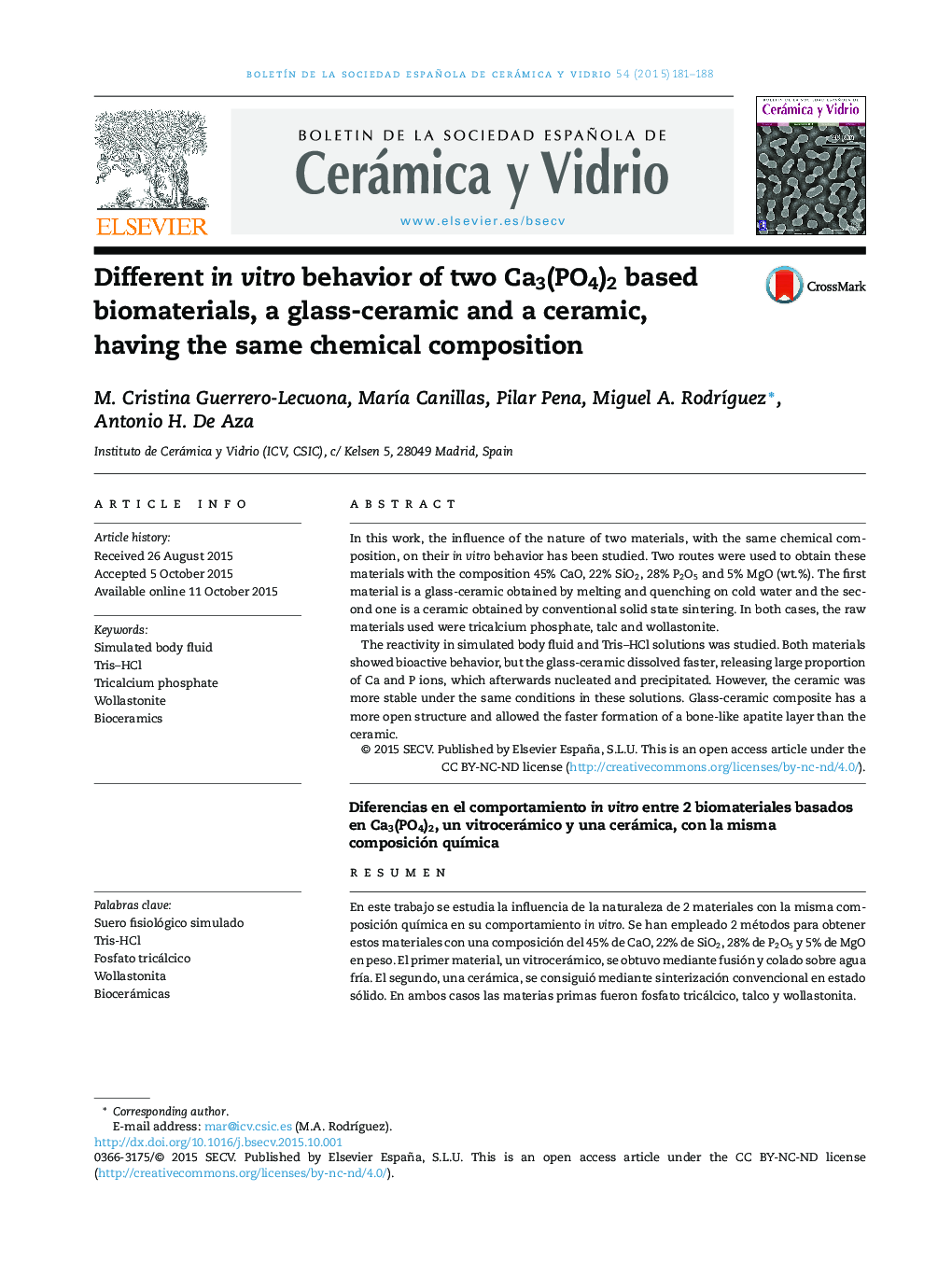| کد مقاله | کد نشریه | سال انتشار | مقاله انگلیسی | نسخه تمام متن |
|---|---|---|---|---|
| 1454207 | 988967 | 2015 | 8 صفحه PDF | دانلود رایگان |

In this work, the influence of the nature of two materials, with the same chemical composition, on their in vitro behavior has been studied. Two routes were used to obtain these materials with the composition 45% CaO, 22% SiO2, 28% P2O5 and 5% MgO (wt.%). The first material is a glass-ceramic obtained by melting and quenching on cold water and the second one is a ceramic obtained by conventional solid state sintering. In both cases, the raw materials used were tricalcium phosphate, talc and wollastonite.The reactivity in simulated body fluid and Tris–HCl solutions was studied. Both materials showed bioactive behavior, but the glass-ceramic dissolved faster, releasing large proportion of Ca and P ions, which afterwards nucleated and precipitated. However, the ceramic was more stable under the same conditions in these solutions. Glass-ceramic composite has a more open structure and allowed the faster formation of a bone-like apatite layer than the ceramic.
ResumenEn este trabajo se estudia la influencia de la naturaleza de 2 materiales con la misma composición química en su comportamiento in vitro. Se han empleado 2 métodos para obtener estos materiales con una composición del 45% de CaO, 22% de SiO2, 28% de P2O5 y 5% de MgO en peso. El primer material, un vitrocerámico, se obtuvo mediante fusión y colado sobre agua fría. El segundo, una cerámica, se consiguió mediante sinterización convencional en estado sólido. En ambos casos las materias primas fueron fosfato tricálcico, talco y wollastonita.Se estudió la reactividad frente a suero fisiológico simulado y solución Tris-HCl. Ambos materiales han mostrado comportamiento bioactivo pero el vitrocerámico evidencia una reactividad más alta, liberando cantidades mayores de iones Ca y P, los que posteriormente nuclean y precipitan. La muestra cerámica tiene un comportamiento más estable bajo las mismas condiciones en estas soluciones. El material vitrocerámico tiene una estructura más abierta y conduce a la formación más rápida de una capa de hidroxiapatita.
Journal: Boletín de la Sociedad Española de Cerámica y Vidrio - Volume 54, Issue 5, September–October 2015, Pages 181–188